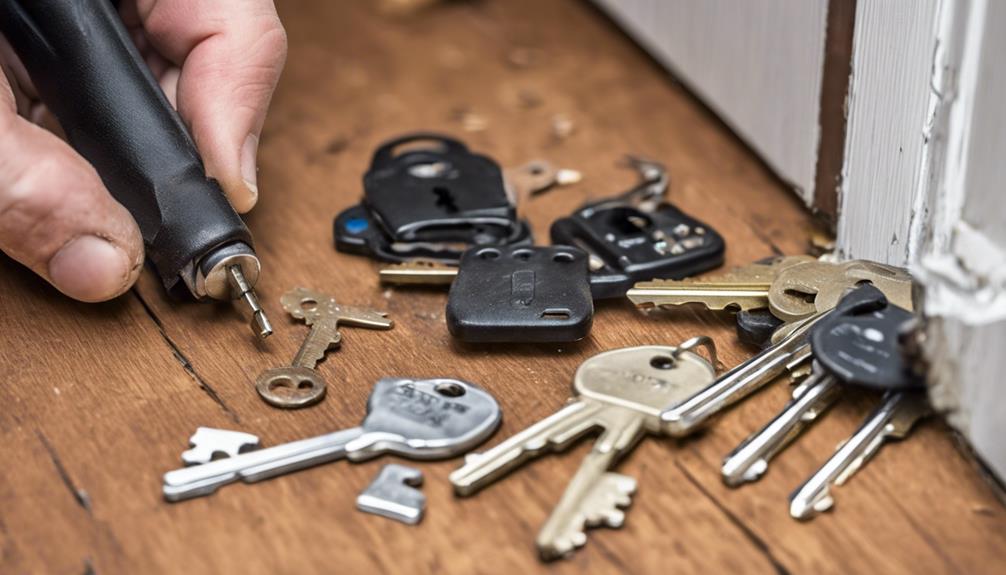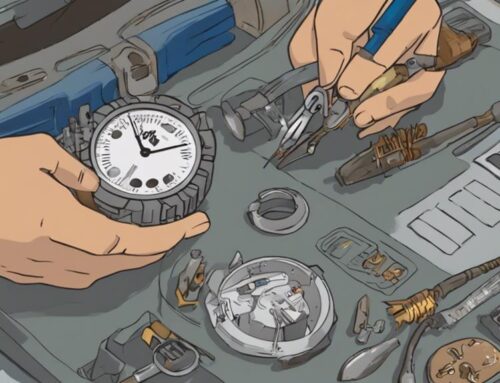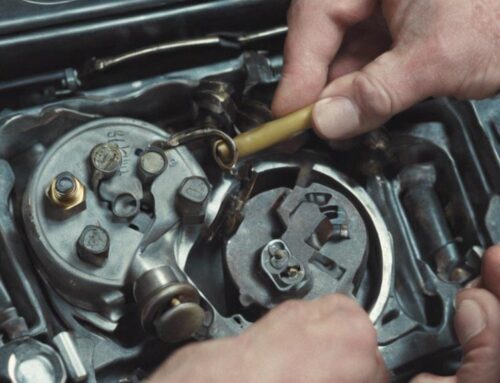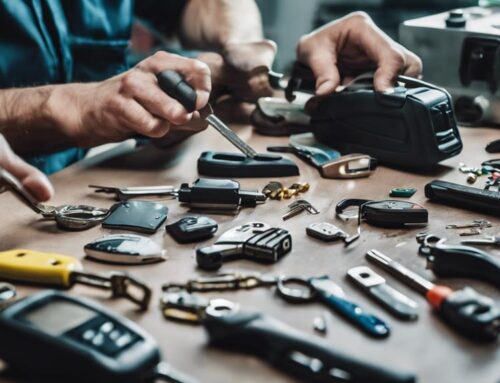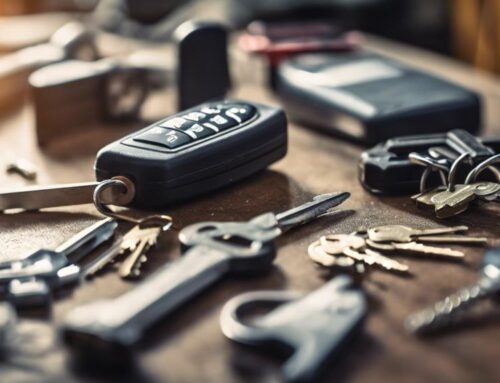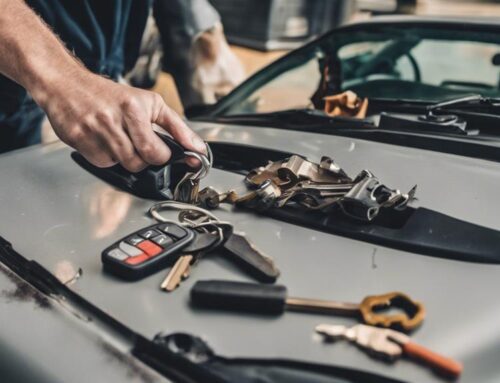Yes, a locksmith can remove a broken key from a lock. When your key snaps off in the lock, don’t panic. Locksmiths are equipped with specialized tools and have the expertise to extract the broken piece without damaging your lock. They use key extractor kits and lubricants to efficiently pull out the broken key. Whether it’s your house, office, or car lock, a skilled locksmith can handle the delicate extraction process. If you’ve tried DIY methods and they’ve failed, it’s best to call a professional. They’re available 24/7 to help resolve your issue swiftly and effectively, ensuring your lock’s integrity. There’s more to explore on how this process works and its benefits.
Key Breakage Causes

Understanding why keys break in locks can help you prevent this frustrating issue. You might not realize it, but those keys you casually toss around are often made of soft metals like brass, which can weaken over time. If you’re a bit heavy-handed or treat your key like a crowbar, beware—you’re setting the stage for a breakage extravaganza. Also, if your lock feels more like a puzzle filled with debris, it’s a clear invite for trouble when inserting or turning your key. And let’s not forget, extreme temperatures and rough handling are like kryptonite to the integrity of your lock and key. Next time, think twice before using Hulk strength to open your door, or you’ll be dialing a locksmith faster than you can say ‘broken key extractor!’
Key Extraction Challenges
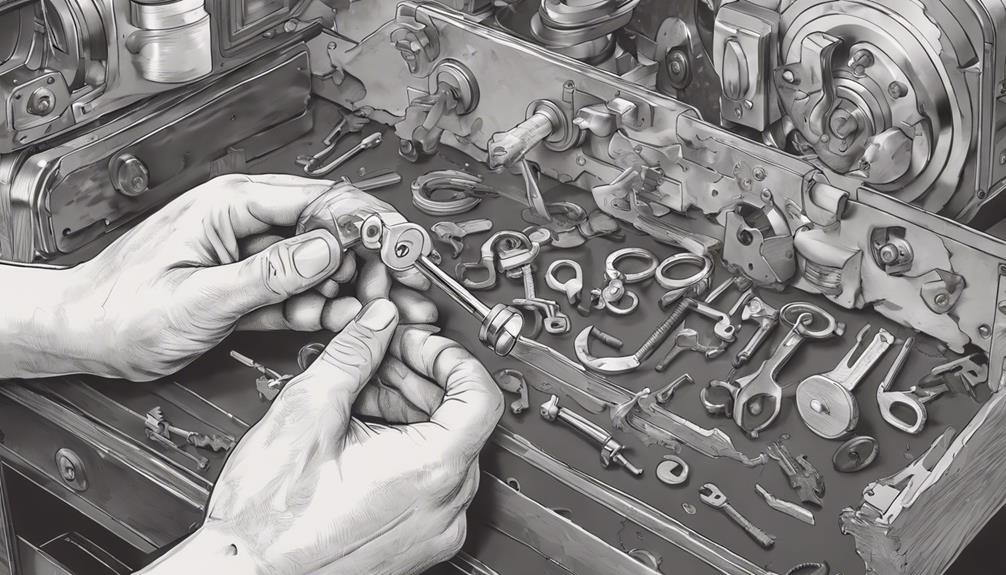
When you’re faced with a broken key in a lock, the challenges can really pile up. The selection of the right tool is essential; using the incorrect one can worsen the situation. Locksmiths often encounter various difficulties depending on the lock type and how the key broke inside it.
Common Extraction Difficulties
Removing a broken key from a lock often presents unique challenges, especially if it’s lodged deeply or damaged inside the mechanism. Imagine your key stuck in the lock cylinder like a stubborn squirrel in a bird feeder. It’s not budging! When the broken part of your key decides to play hide and seek inside the lock, it can cause all sorts of havoc. You might think poking around with a paperclip will do the trick, but that’s a fast track to more damage to your lock. Instead, calling a locksmith to extract the broken key is your best bet. They’ve got the skills and gadgets to delicately coax that key out without turning your lock into modern art.
Tool Selection Importance
Selecting the appropriate tool is essential for safely extracting a broken key from a lock without causing further damage. Imagine trying to scoop ice cream with a fork; it’s just not the right tool for the job, right? Similarly, a skilled locksmith knows that using specific tools like a key extractor kit, needle-nose pliers, and the right lubricants makes all the difference. Each lock type might whisper its own little preferences for how it wants to be handled. These pros don’t just jam any old tool in there. They assess the situation, pick their tools wisely, and get that broken key out smoother than a slick magician pulling a rabbit out of a hat! So, trust the skilled locksmiths to handle your lock’s quirky character.
DIY Key Removal Tips
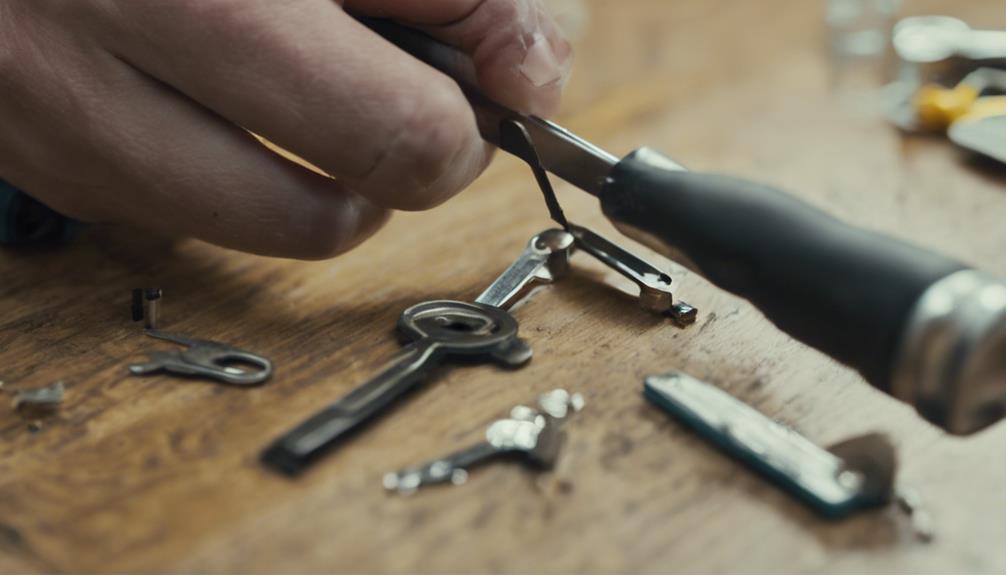
If you’re faced with a broken key in your lock, there are a few DIY techniques you can try before calling a professional. First, you’ll need the right tools, like needle-nose pliers or a key extractor kit, to effectively pull the broken piece from the lock. Additionally, applying a bit of lubricant, such as graphite powder, can make the extraction process smoother and prevent further damage to the lock mechanism.
Tools for Key Extraction
For DIY key removal, various tools can make the job easier, such as needle-nose pliers or a thin barbecue skewer. If you’ve snapped your key, don’t panic! Grab those needle-nose pliers; their fine tips are perfect for gripping tiny bits of the broken key. Or, if you’re feeling a bit medieval, why not try a barbecue skewer? It’s not just for kebabs anymore but can act as a lever to wiggle that stubborn metal out.
Don’t overlook the tiny but mighty eyeglass screwdrivers, ideal for those delicate operations. And yes, those key extraction tools you’ve seen online aren’t just for show—they really can save the day. Lastly, don’t underestimate the power of pocketknives or dental picks, they’re like the Swiss Army knife of key removal!
Techniques for Home Removal
Before attempting to remove a broken key from a lock yourself, it is important to apply a lubricant like WD-40 to simplify the extraction process. After that, if your key decided to play hide and seek inside the lock, grab those needle nose pliers. They’re not just for looking intimidating!
| Step | Tool | Cheer Up Tip |
|---|---|---|
| 1 | Lock Lubricant | ‘Slippery when wet!’ |
| 2 | Needle Nose Pliers | ‘Time to pinch-hit!’ |
| 3 | Jigsaw (optional) | ‘When you need the big guns!’ |
| 4 | Patience | ‘Breathe, it’s just a key!’ |
If all else fails in your quest to extract broken key, it’s time to dial up some locksmith assistance. Remember, even heroes need a little help sometimes!
Professional Locksmith Tools

To remove a broken key from a lock, locksmiths rely on specialized tools such as key extractors and broken key removal kits. When you’re stuck with a key part stubbornly clinging to the inside of your lock, it’s time to call a professional locksmith. They come armed with precision instruments designed to delicately pull, turn, and coax that pesky broken key out without turning your lock into scrap metal. These key extraction tools aren’t your average tweezers; they’re crafted to fit snugly into the keyway and grip what’s left of your key for a smooth extraction. Thanks to their expertise and these nifty gadgets, locksmiths boast a high success rate in rescuing keys and saving the day—or at least, your lock!
When to Call a Locksmith

When should you call a locksmith to deal with a broken key stuck in your lock? Well, if you’ve tried—and failed—to channel your inner MacGyver and that broken piece of key is still mocking you from the depths of your door lock, it’s time to call in the pros. Let’s face it, when keys break, they don’t pick a convenient time. Luckily, expert locksmiths are on call 24/7. They come armed with the right tools and the know-how to remove a key without turning your door lock into a modern art project. So, save yourself the headache and possible lock surgery by calling a locksmith as soon as your DIY attempts flop.
Locksmith Extraction Process
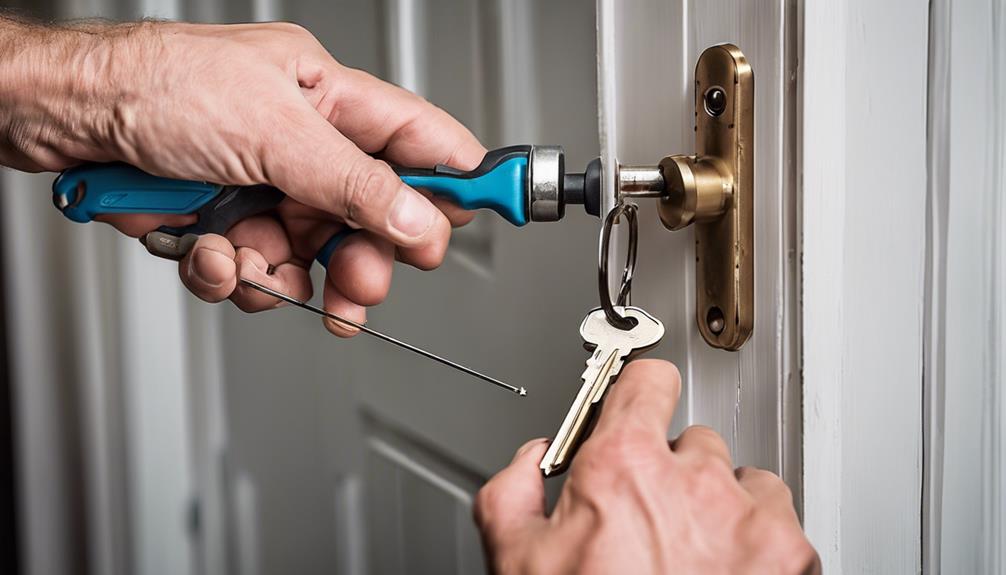
Now that you’ve decided to call a locksmith, let’s explore how they expertly remove a broken key from your lock. Armed with key extractors and tweezers, your locksmith dives into the lock mechanism like a surgeon in an operation. They possess the expertise to navigate through the tiny metal maze without turning your lock into a modern art sculpture. Whether it’s your cozy home, your bustling office, or even your trusty car, locksmiths are equipped to handle all sorts of crises. They assess the battlefield, choose their weapons wisely, and perform the key extraction with a finesse that saves you both time and tears. So, sit back and let the magic happen!
Post-Extraction Lock Care

After a locksmith removes a broken key, it’s important to lubricate the lock to guarantee its smooth operation. You don’t want your lock throwing a tantrum like a toddler without a nap! Slather that lock with some graphite powder or spray lubricant—it’s like a spa day for your lock. Next up, grab a spare key (you’ve got one, right?) and give it a whirl. Make sure everything’s moving smoother than a jazz tune. If things still feel wonky, don’t hesitate to call a professional locksmith to resolve the problem. They’re like the superheroes of the key world. Remember, regular TLC for your lock can prevent future “key-inside-lock” dramas!
Choosing a New Lock
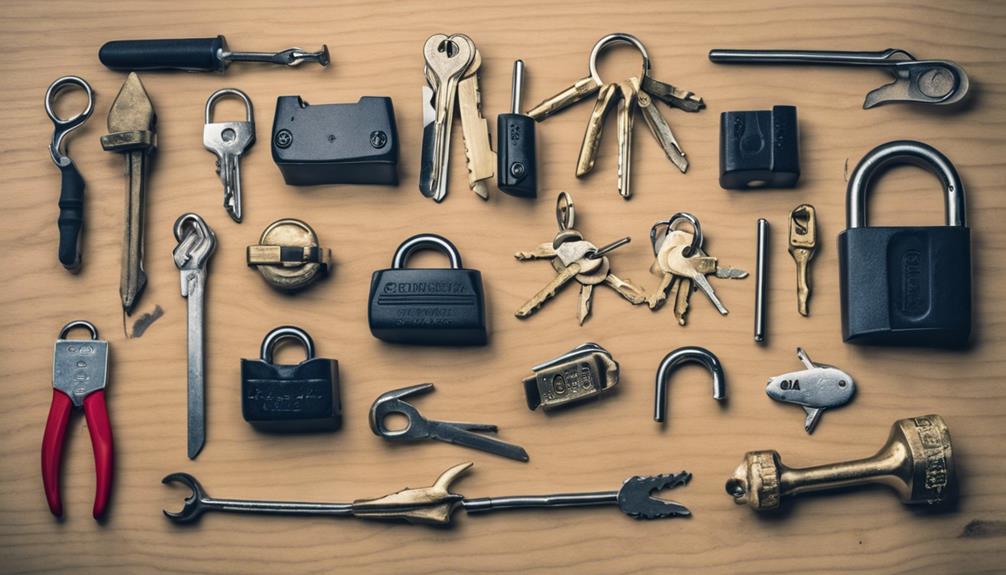
If you’re in the market for a new lock, it’s crucial to evaluate the security features that suit your specific needs. Whether you’ve had a locksmith remove a broken key or you’re looking for a key replacement, the right lock can make all the difference. Here’s a handy comparison to help you choose:
| Feature | Benefit |
|---|---|
| Resistance to Picking | Keeps the lock-pickers at bay |
| Smart Lock Options | Allows keyless entry and remote access |
| Durable Materials | Ensures long-term reliability and fewer mishaps |
Promoting Low Rate Locksmith

You can rely on Low Rate Locksmith for affordable and efficient broken key extraction services. Why fumble with needle nose pliers and lubricant from your local hardware store, or worse, experiment with graphite powder and a scroll saw like a DIY disaster waiting to happen? Let the experts handle it! Their team isn’t just pulling your leg—they pull out snapped keys with a finesse that would make a locksmithing Olympic judge nod in approval. Plus, with 24/7 emergency services, they’re ready faster than you can say “locked out.” So, before you break out the tools and make things worse, give Low Rate Locksmith a call. They’ve got the skills and the tools, minus the drama.
Frequently Asked Questions
Can Repeated Key Extraction Damage the Lock Mechanism?
Yes, repeated key extraction can indeed damage your lock mechanism. Each time you yank a broken key out, you risk wearing out the internal components like pins and springs. This wear and tear can misalign parts or even break them, reducing the lock’s overall functionality. It’s better to keep those extraction attempts to a minimum and maybe call in a pro locksmith to handle the delicate operation. Better safe than sorry!
Are There Environmentally Friendly Ways to Dispose of Broken Keys?
Imagine you’re a spy and your key snaps during a sneaky mission. What now? Don’t chuck it in the bin! Instead, you can drop off that broken key at a metal recycling center. They’ll melt it down and give it a new life, maybe as part of a bridge or even a new spy gadget. It’s a simple, effective way to keep metal out of landfills and reduce environmental impact.
How Can I Prevent Keys From Breaking in the Future?
To prevent your keys from breaking in the future, you should use keys made from durable materials like steel or nickel silver. Regularly maintaining and lubricating your locks can also help reduce wear on your keys. Avoid using excessive force when turning them, and always keep your keys in a safe place to avoid damage. Additionally, consider getting spare keys made, so you’re not out of luck if one breaks!
Will My Lock Warranty Cover Key Extraction Services?
You might be wondering if your lock warranty has got your back when it comes to key extraction services. Well, generally, lock warranties don’t cover the cost of a locksmith fishing out broken keys from your lock. It’s a good idea to double-check the specifics of your warranty. If you’re out of luck there, reaching out to a locksmith will be your next best step, though it’ll likely be an out-of-pocket expense.
What Are the Risks of Using Unlicensed Locksmiths?
Using an unlicensed locksmith can be risky. They often lack the proper training, which means they might damage your lock further when trying to extract a broken key. Also, their methods might not meet security standards, potentially compromising your lock’s integrity. Additionally, if they cause damage, you might not be covered by insurance. Always better to hire a licensed locksmith to guarantee the job’s done right and securely.

